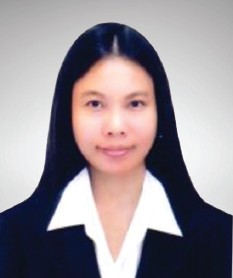Latest Update in Bone Age Assessment Model with Deep Learning
Main Article Content
Abstract
Deep convolutional neural network (CNN) have performed remarkably well on medical image classification, including bone age assessment. The model is designed for evaluating the maturity of a child’s skeletal system using x-ray images. The outstanding CNN model can accurately estimate bone age with a mean average error at 4.49 months. This survey presents existing CNN models for bone age assessment, promising developments, and high-level technical descriptions for implementing the CNN model. It aims to give background knowledge for non-computer scientists interested in deep learning application of bone age assessment. Readers will understand how CNN can improve the performance of bone age assessment models as well as its challenges for future research.
Article Details
This is an open access article distributed under the terms of the Creative Commons Attribution Licence, which permits unrestricted use, distribution, and reproduction in any medium, provided the original work is properly cited.
References
2. A comparison of deep learning performance against health-care professionals in detecting diseases from medical imaging: a systematic review and meta-analysis. The Lancet Digital Health. 2019; 1(6):271-97.
3. Dallora AL, Anderberg P, Kvist O, et al. Bone age assessment with various machine learning techniques: A systematic literature review and meta-analysis. PloS one 2019;14(7):220-42
4. Greulich WW, Pyle SI, Todd TW. Radiographic atlas of skeletal development of the hand and wrist. Stanford: Stanford university press, 1959;2:150-9.
5. Tanner JM, Whitehouse RH, Cameron N, et al. Assessment of skeletal maturity and prediction of adult height (TW2 method). London: Academic press 1975;16.
6. Anwar S. M, Majid M, Qayyum, A, Awais, M, Alnowami M, & Khan M. K. Medical image analysis using convolutional neural networks: a review. Journal of medical systems, 101842(11):226.
7. Jang L, Kwanggi K. Applying Deep Learning in Medical Images: The Case of Bone Age Estimation. Healthcare Informatics Research, 2018;24:86.
8. K. He K, X. Zhang, S. Ren and J. Sun. Deep Residual Learning for Image Recognition. IEEE Conference on Computer Vision and Pattern Recognition (CVPR), Las Vegas, NV, 2016:770-778
9. Hai-Duong N, Kim SH. Automatic Whole-body Bone Age Assessment Using Deep Hierarchical Features, 2019. arXiv preprint arXiv:1901.10237.
10. Karen S, Andrew Z. Very Deep Convolutional Networks for Large-Scale Image Recognition, 2014. arXiv 1409.1556.
11. Jetley S, Lord NA, Lee N, et al. Learn To Pay Attention, 2018. ArXiv, abs/1804.02391.
12. Keatmanee C, Klabwong S, Osatavanichvong K, et al. Performance of convolutional neural networks and transfer learning for skeletal bone age assessment. BKK Med J 2019;15(1).
13. Yuanfeng Ji, Hao C, Dan L, et al. PRSNet: Part Relation and Selection Network for Bone Age Assessment, 2019.
14. Deng J, Dong W, Socher R, et al. Imagenet: A large-scale hierarchical image database. In IEEE conference on computer vision and pattern recognition, 2009:248-55.
15. Tang W, Wu G, Shen G. Improved Automatic Radiographic Bone Age Prediction with Deep Transfer Learning. 12th International Congress on Image and Signal Processing, BioMedical Engineering and Informatics (CISP-BMEI), Suzhou, China, 2019:1-6.
16. Zhou J, Li Z, Zhi W, et al. Dawes. Using Convolutional Neural Networks and Transfer Learning for Bone Age Classification. International Conference on Digital Image Computing: Techniques and Applications (DICTA), Sydney, NSW, 2017:1-6.
17. Pan SJ, Yang Q. A survey on transfer learning. IEEE Transactions on knowledge and data engineering, 2009; 22(10):1345-1359.
18. Shorten C, Khoshgoftaar TM. A survey on image data augmentation for deep learning. J Big Data 2019;6(1): 60.
19. Wang J, Perez L. The effectiveness of data augmentation in image classification using deep learning. Convolutional Neural Networks Vis. Recognit, 2017:11.
20. Mikołajczyk A, Grochowski M. Data augmentation for improving deep learning in image classification problem. International interdisciplinary PhD workshop (IIPhDW), 2018:117-22.
21. Inoue H. Data augmentation by pairing samples for images classification, 2018. arXiv preprint arXiv:1801.02929.
22. Simonyan K, Vedaldi A, Zisserman A. Deep inside convolutional networks: Visualising image classification models and saliency maps, 2013. arXiv preprint arXiv:1312.6034.
23. Zhou B, Khosla A, Lapedriza A, et al. Learning deep features for discriminative localization. In Proceedings of the IEEE conference on computer vision and pattern recognition, 2016:2921-9.
24. Kim I, Rajaraman S, Antani S. Visual Interpretation of Convolutional Neural Network Predictions in Classifying Medical Image Modalities. Diagnostics 2019; 9(2):38.
25. Koitka S, Demircioglu A, Kim MS, et al. Ossification area localization in pediatric hand radiographs using deep neural networks for object detection. PloS one 2018;13(11):0207496


